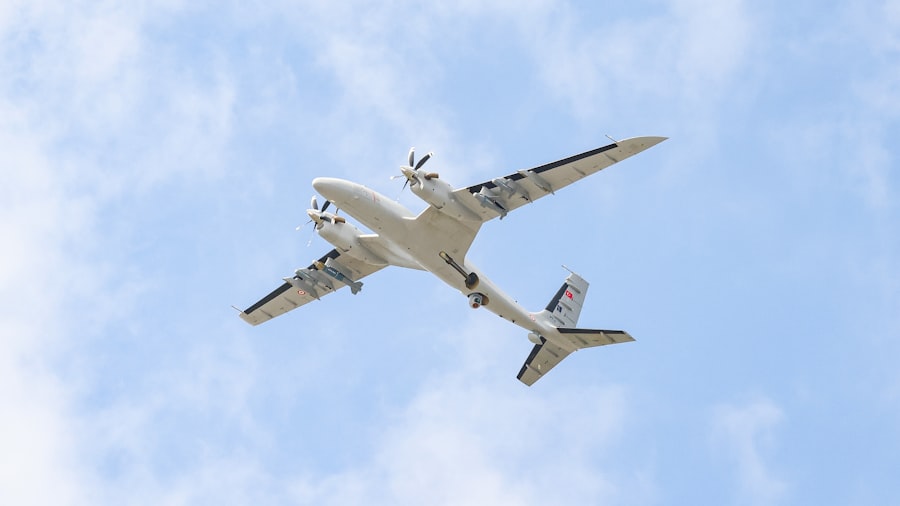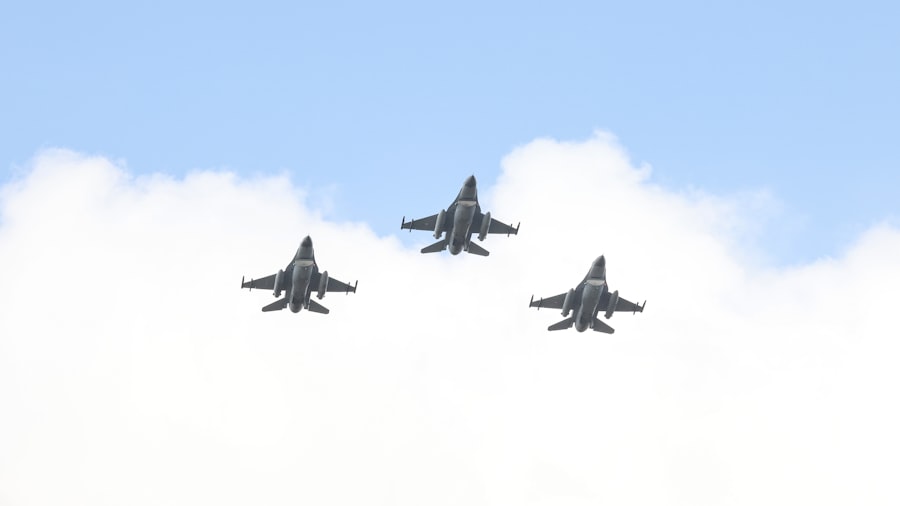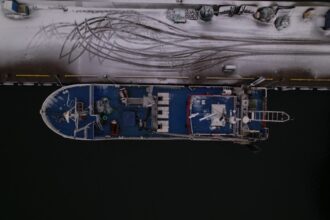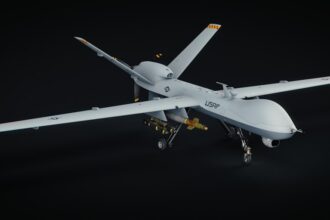In an era characterized by rapid technological advancements, the modernization of military technology has become a critical priority for nations around the globe. The importance of this modernization cannot be overstated, as it directly influences a country’s ability to defend itself and maintain its sovereignty. As adversaries increasingly leverage cutting-edge technologies, such as artificial intelligence, cyber capabilities, and advanced weaponry, military forces must adapt to ensure they remain competitive.
The integration of modern technology into military operations not only enhances combat effectiveness but also improves strategic decision-making and operational efficiency. Moreover, modernizing military technology is essential for addressing the evolving nature of warfare. The rise of asymmetric threats, including terrorism and cyber warfare, necessitates a shift in how military forces operate.
Traditional paradigms of warfare are being challenged by non-state actors and hybrid warfare strategies that blend conventional and unconventional tactics. By embracing modern technologies, militaries can develop more agile and responsive capabilities that are better suited to counter these emerging threats. This adaptability is crucial for maintaining national security in an increasingly complex global landscape.
Key Takeaways
- Modernizing military technology is crucial for maintaining a competitive edge and ensuring national security.
- Legacy systems present challenges such as interoperability issues and limited capabilities compared to modern technology.
- Finding the right balance between tradition and innovation is essential for effectively modernizing military technology.
- Outdated military systems pose risks such as vulnerability to cyber attacks and inability to keep up with evolving threats.
- Upgrading legacy military technology comes with significant costs, including research and development, procurement, and training expenses.
The Challenges of Legacy Systems
Legacy systems pose significant challenges to military modernization efforts. These outdated technologies often rely on antiquated hardware and software that can be difficult to maintain and integrate with newer systems. As a result, military organizations may find themselves hampered by inefficiencies and limitations that hinder their operational capabilities.
The reliance on legacy systems can create a technological gap that adversaries can exploit, putting national security at risk. Furthermore, the complexity of legacy systems can lead to increased costs and resource allocation issues. Maintaining these systems often requires specialized knowledge and training, which can divert attention and funding away from more innovative projects.
As military budgets face scrutiny and competition from other sectors, the need to allocate resources effectively becomes paramount. The challenge lies in balancing the maintenance of legacy systems while investing in new technologies that can enhance overall military readiness.
Balancing Tradition and Innovation in Military Technology

The military has a long-standing tradition of valuing established practices and technologies, which can create tension when it comes to embracing innovation. Balancing tradition with the need for modernization is a delicate task that requires careful consideration of both historical context and future needs. While traditional methods have proven effective in past conflicts, the changing nature of warfare demands a willingness to adapt and evolve.
To achieve this balance, military leaders must foster a culture that encourages innovation while respecting the lessons learned from history. This involves creating an environment where new ideas can flourish alongside established practices. By promoting collaboration between experienced personnel and younger, tech-savvy members of the force, militaries can harness the strengths of both groups to drive technological advancement.
This synergy can lead to the development of hybrid solutions that honor tradition while incorporating modern capabilities.
The Risks of Maintaining Outdated Military Systems
| Category | Risks |
|---|---|
| Operational Efficiency | Decreased effectiveness in combat situations |
| Cost | Higher maintenance and repair expenses |
| Security | Increased vulnerability to cyber attacks |
| Technological Superiority | Loss of advantage against adversaries with modern systems |
Maintaining outdated military systems carries inherent risks that can jeopardize national security. As technology evolves, older systems may become increasingly vulnerable to cyberattacks and other forms of exploitation. Adversaries are constantly seeking ways to exploit weaknesses in outdated technologies, which can lead to catastrophic failures during critical operations.
The reliance on legacy systems can create blind spots in situational awareness, leaving military forces ill-prepared to respond to emerging threats. Additionally, outdated systems may lack the interoperability required for joint operations with allied forces. In an era where coalition warfare is common, the inability to effectively communicate and share information with partners can hinder mission success.
This lack of integration can lead to confusion on the battlefield and diminish the overall effectiveness of military operations. As such, the risks associated with maintaining outdated systems underscore the urgent need for modernization efforts.
The Cost of Upgrading Legacy Military Technology
Upgrading legacy military technology is often perceived as a daunting financial burden, yet it is a necessary investment for ensuring national security. The costs associated with modernization can be substantial, encompassing not only the acquisition of new equipment but also training personnel and integrating new systems into existing frameworks. However, failing to invest in upgrades can lead to even greater long-term costs, including decreased operational effectiveness and increased vulnerability to threats.
Moreover, the financial implications of upgrading legacy systems extend beyond immediate expenditures. Investing in modern technology can yield significant returns in terms of enhanced capabilities and efficiencies. By streamlining operations and reducing maintenance costs associated with outdated systems, militaries can allocate resources more effectively.
Ultimately, the cost of upgrading should be viewed not merely as an expense but as a strategic investment in future readiness.
The Role of Legacy Systems in National Defense

Despite their challenges, legacy systems still play a vital role in national defense. Many military organizations have built their operational frameworks around these systems, which have proven reliable over time. In some cases, legacy technologies may continue to meet specific mission requirements effectively, making their complete replacement unnecessary in the short term.
Furthermore, legacy systems often serve as a bridge during the transition to modern technologies. They provide continuity in operations while new capabilities are being developed and integrated.
This transitional phase is essential for ensuring that military forces remain operationally effective during periods of change. By recognizing the ongoing relevance of legacy systems while simultaneously pursuing modernization efforts, militaries can create a more resilient defense posture.
Strategies for Integrating Modern Technology with Legacy Systems
Integrating modern technology with legacy systems requires thoughtful planning and execution. One effective strategy is to adopt a phased approach that allows for gradual upgrades rather than complete overhauls. This method enables military organizations to test new technologies in conjunction with existing systems, minimizing disruption while maximizing learning opportunities.
By piloting new solutions within controlled environments, militaries can assess their effectiveness before full-scale implementation. Another key strategy involves fostering collaboration between technology developers and military personnel who understand operational needs. Engaging end-users early in the development process ensures that new technologies are designed with practical applications in mind.
This collaborative approach not only enhances the likelihood of successful integration but also promotes buy-in from personnel who may be resistant to change. By involving stakeholders at all levels, militaries can create solutions that are both innovative and aligned with operational realities.
Overcoming Resistance to Change in Military Technology
Resistance to change is a common challenge faced by military organizations when it comes to adopting new technologies. This resistance often stems from a combination of cultural factors, fear of the unknown, and concerns about job security among personnel accustomed to traditional methods. To overcome this resistance, military leaders must prioritize communication and education about the benefits of modernization.
Creating a culture that embraces innovation requires leadership commitment at all levels. Leaders should actively promote success stories related to technological advancements and highlight how these changes enhance mission effectiveness. Additionally, providing training opportunities that equip personnel with the skills needed to operate new technologies can alleviate fears and build confidence in their ability to adapt.
By fostering an environment where change is viewed as an opportunity rather than a threat, militaries can facilitate smoother transitions toward modernization.
The Impact of Modernizing Military Technology on Global Security
The modernization of military technology has far-reaching implications for global security dynamics. As nations invest in advanced capabilities, they reshape the balance of power on the international stage. Countries that successfully modernize their military forces may gain strategic advantages over adversaries, potentially leading to shifts in alliances and geopolitical relationships.
This evolving landscape necessitates careful monitoring and analysis by policymakers to understand how technological advancements influence global stability. Moreover, modernizing military technology can contribute to deterrence strategies by demonstrating a nation’s commitment to maintaining robust defense capabilities. When adversaries perceive that a country possesses advanced technologies and innovative strategies, they may be less likely to engage in aggressive actions.
This deterrent effect underscores the importance of continued investment in modernization efforts as a means of promoting peace and stability in an increasingly complex world.
The Future of Military Technology: Adapting to New Threats and Challenges
The future of military technology will undoubtedly be shaped by emerging threats and challenges that require adaptive responses from armed forces worldwide. As cyber warfare becomes more prevalent and non-state actors continue to exploit vulnerabilities in traditional defense structures, militaries must remain agile in their approach to technology adoption. This agility will involve not only investing in cutting-edge capabilities but also fostering a culture of continuous learning and adaptation.
Additionally, advancements in artificial intelligence and autonomous systems will play a pivotal role in shaping future military operations. These technologies have the potential to revolutionize decision-making processes and enhance situational awareness on the battlefield. However, their integration must be approached thoughtfully, considering ethical implications and potential unintended consequences.
As militaries navigate this evolving landscape, they must remain vigilant in assessing both opportunities and risks associated with new technologies.
The Ethical and Moral Considerations of Modernizing Military Technology
The modernization of military technology raises important ethical and moral considerations that cannot be overlooked. As nations develop advanced weaponry and autonomous systems capable of making life-and-death decisions, questions arise regarding accountability and the potential for misuse. Ensuring that technological advancements align with international humanitarian law and ethical standards is paramount for maintaining legitimacy in military operations.
Moreover, discussions surrounding the ethical implications of emerging technologies must involve diverse perspectives from various stakeholders, including policymakers, military leaders, ethicists, and civil society representatives. Engaging in these conversations fosters transparency and accountability while promoting responsible innovation within defense sectors. As militaries strive to modernize their capabilities, they must do so with a commitment to upholding ethical principles that prioritize human rights and dignity.
In conclusion, the modernization of military technology is an essential endeavor for nations seeking to maintain security in an increasingly complex world. While challenges associated with legacy systems persist, strategic approaches that balance tradition with innovation can pave the way for effective integration of modern capabilities. By addressing resistance to change and considering ethical implications, militaries can navigate this transformative landscape while ensuring they remain prepared for future threats and challenges.
Legacy systems in military technology often pose significant challenges due to their outdated infrastructure and the complexities involved in integrating them with modern advancements. An insightful article discussing these challenges can be found on the website “In The War Room.” This article delves into the intricacies of maintaining and upgrading legacy systems within military operations, highlighting the balance between preserving historical technology and embracing innovation. For a deeper understanding of these issues, you can read the full article by visiting In The War Room.
🔍WATCH THIS! The Secret Weakness That Will Break The US Military🧭
FAQs
What are legacy systems in military technology?
Legacy systems in military technology refer to older, often outdated, equipment, software, or technology that is still in use within the military. These systems may have been in service for many years and are often difficult and costly to maintain and upgrade.
Why are legacy systems still used in the military?
Legacy systems are still used in the military for a variety of reasons. These may include budget constraints, the complexity of replacing or upgrading the systems, interoperability with other existing systems, and the need to maintain continuity of operations while transitioning to newer technology.
What are the challenges of maintaining legacy systems in military technology?
Maintaining legacy systems in military technology can present several challenges. These may include difficulties in finding spare parts, the lack of support from original equipment manufacturers, security vulnerabilities, and the limitations of outdated technology in meeting modern military requirements.
What are the risks of relying on legacy systems in military technology?
Relying on legacy systems in military technology can pose several risks. These may include decreased operational effectiveness, increased vulnerability to cyber attacks, higher maintenance and support costs, and the potential for obsolescence to impact the military’s ability to effectively carry out its missions.
How is the military addressing the issue of legacy systems in technology?
The military is addressing the issue of legacy systems in technology through various approaches. These may include modernization efforts to upgrade or replace outdated systems, the development of interoperability standards to integrate legacy systems with newer technology, and the implementation of cybersecurity measures to protect legacy systems from threats.




